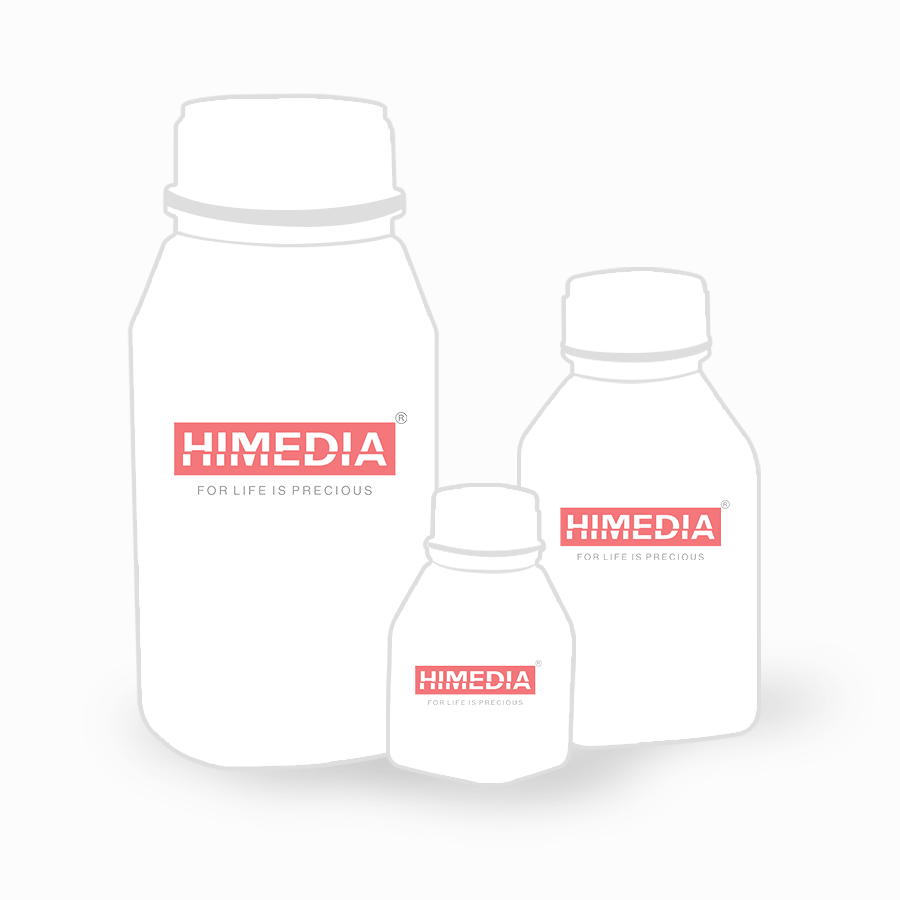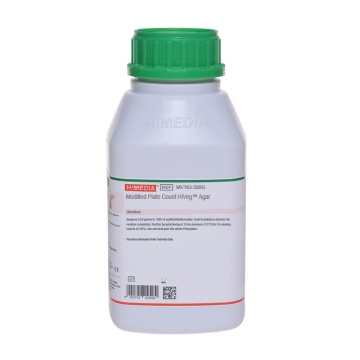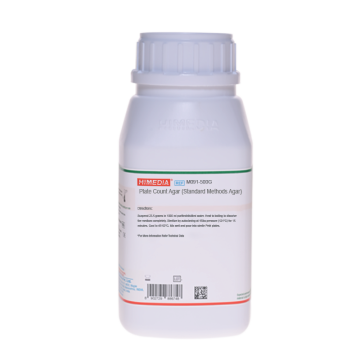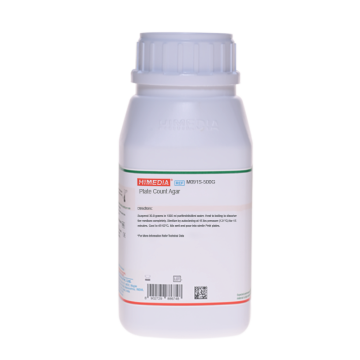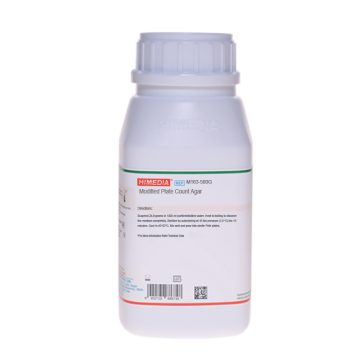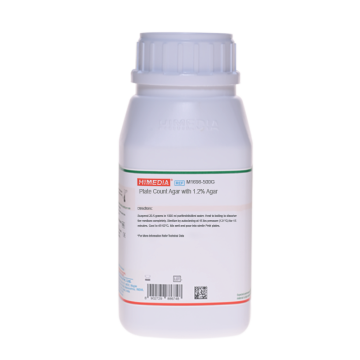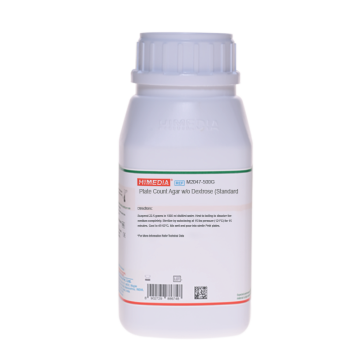 Your enquiry has been submitted
Your enquiry has been submitted
Baird Staphylococcus Enrichment Broth Base
Staphylococci#CC293D
Intended Use
Recommended for selective enrichment of pathogenic Staphylococci from food, clinical and non-clinical samples.
Composition**
| Ingredients | g / L |
|---|---|
| Peptone | 8.000 |
| Yeast extract | 1.000 |
| Tryptone | 2.000 |
| HM extract# | 5.000 |
| Sodium pyruvate | 10.000 |
| Glycine | 12.000 |
| Lithium chloride | 5.000 |
Final pH (at 25°C): 6.6±0.2
**Formula adjusted, standardized to suit performance parameters
# Equivalent to Meat extract
Directions
Suspend 43.0 grams in 990 ml purified / distilled water. Heat if necessary to dissolve the medium completely. Dispense 9.9 ml in test tubes. Sterilize by autoclaving at 15 lbs pressure (121°C) for 15 minutes. Cool to less than 45°C and aseptically add 0.1 ml of PTe 1% Selective Supplement (1 ml per vial) (FD052). Mix well and dispense into sterile tubes or flasks as desired.
Principle And Interpretation
Baird Staphylococcus Enrichment Broth Base is developed from the tellurite glycine formulation of Zebovitz et al (1) for enrichment of pathogenic Staphylococcus. Peptone, Tryptone, HM extract and yeast extract are sources of nitrogen, carbon, sulphur and vitamins. Sodium pyruvate not only protects injured cells and helps recovery but also stimulates Staphylococcus aureus growth without destroying selectivity. Lithium chloride and potassium tellurite inhibit most of the contaminating microflora except Staphylococcus aureus. Glycine, pyruvate enhances growth of Staphylococcus.
Type of specimen
Clinical samples - Skin lession scrapings; Food samples; Water samples
Specimen Collection and Handling:
For clinical samples follow appropriate techniques for handling specimens as per established guidelines (2,3).
For food samples, follow appropriate techniques for sample collection and processing as per guidelines (4).
For water samples, follow appropriate techniques for sample collection, processing as per guidelines and local standards (5).
After use, contaminated materials must be sterilized by autoclaving before discarding.
Warning and Precautions :
In Vitro diagnostic use. For professional use only. Read the label before opening the container. Wear protective gloves/protective clothing/eye protection/ face protection. Follow good microbiological lab practices while handling specimens and culture. Standard precautions as per established guidelines should be followed while handling specimens. Safety guidelines may be referred in individual safety data sheets.
Limitations :
- Further biochemical tests must be performed for confirmation.
Performance and Evaluation
Performance of the medium is expected when used as per the direction on the label within the expiry period when stored at recommended temperature.
Quality Control
Appearance Cream to yellow homogeneous free flowing powder
Colour and Clarity of prepared medium Light yellow coloured clear solution in tubes
Reaction
Reaction of 4.3% w/v aqueous solution at 25°C. pH: 6.6±0.2
pH
6.40-6.80
Cultural Response
Cultural characteristics observed with added 0.1ml PTe 1% Selective Supplement (1 ml per vial), after an incubation at 35-37°C for 18-24 hours.
| Organism | Inoculum (CFU) | Growth |
|---|---|---|
| ** Bacillus spizizenii ATCC 6633 (00003*) | 50-100 | none - poor |
| Escherichia coli ATCC 25922 (00013*) | 50-100 | none - poor |
| Proteus mirabilis ATCC 25933 | 50-100 | good |
| Staphylococcus aureus subsp. aureus ATCC 25923 (00034*) | 50-100 | good-luxuriant |
Key: *Corresponding WDCM numbers. **Formerly known as Bacillus subtilis subsp. spizizenii
Storage and Shelf Life
Store between 10-30°C in a tightly closed container and the prepared medium at 2-8°C. Use before expiry date on the label. On opening, product should be properly stored dry, after tightly capping the bottle in order to prevent lump formation due to the hygroscopic nature of the product. Improper storage of the product may lead to lump formation. Store in dry ventilated area protected from extremes of temperature and sources of ignition. Seal the container tightly after use. Product performance is best if used within stated expiry period.
Disposal
User must ensure safe disposal by autoclaving and/or incineration of used or unusable preparations of this product. Follow established laboratory procedures in disposing of infectious materials and material that comes into contact with clinical sample must be decontaminated and disposed of in accordance with current laboratory techniques (2,3).
Reference
- Zebovitz E, Evans J B and Niver CF, 1955 J. Bact, 70: 686.
- Isenberg, H.D. Clinical Microbiology Procedures Handbook 2nd Edition.
- Jorgensen, J.H., Pfaller, M.A., Carroll, K.C., Funke, G., Landry, M.L., Richter, S.S and Warnock., D.W. (2015) Manual of Clinical Microbiology, 11th Edition. Vol. 1.
- Salfinger Y., and Tortorello M.L., 2015, Compendium of Methods for the Microbiological Examination of Foods, 5th Ed., American Public Health Association, Washington, D.C.
- Lipps WC, Braun-Howland EB, Baxter TE,eds. Standard methods for the Examination of Water and Wastewater, 24th ed. Washington DC:APHA Press; 2023.
| Product Name | Baird Staphylococcus Enrichment Broth Base |
|---|---|
| SKU | M1091 |
| Product Type | Regular |
| Physical Form | Powder |
| Origin | Animal |
| Packaging type | HDPE |
| References | 1. Zebovitz E, Evans J B and Niver CF, 1955 J. Bact, 70: 686. |
| Customized Product Available | No |



